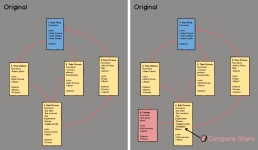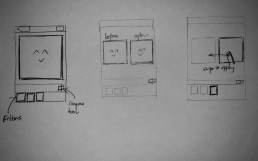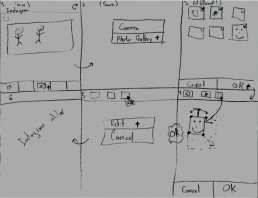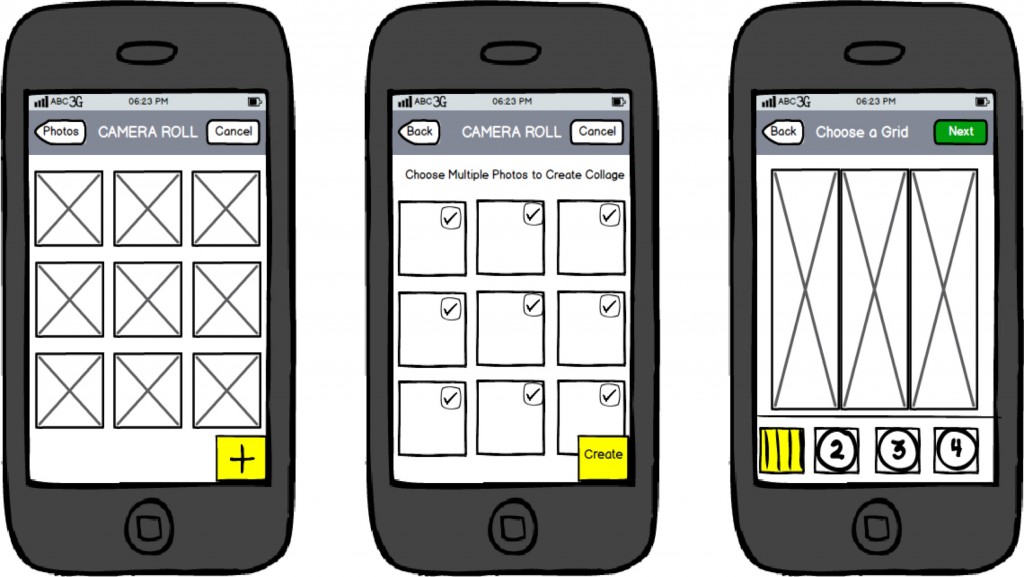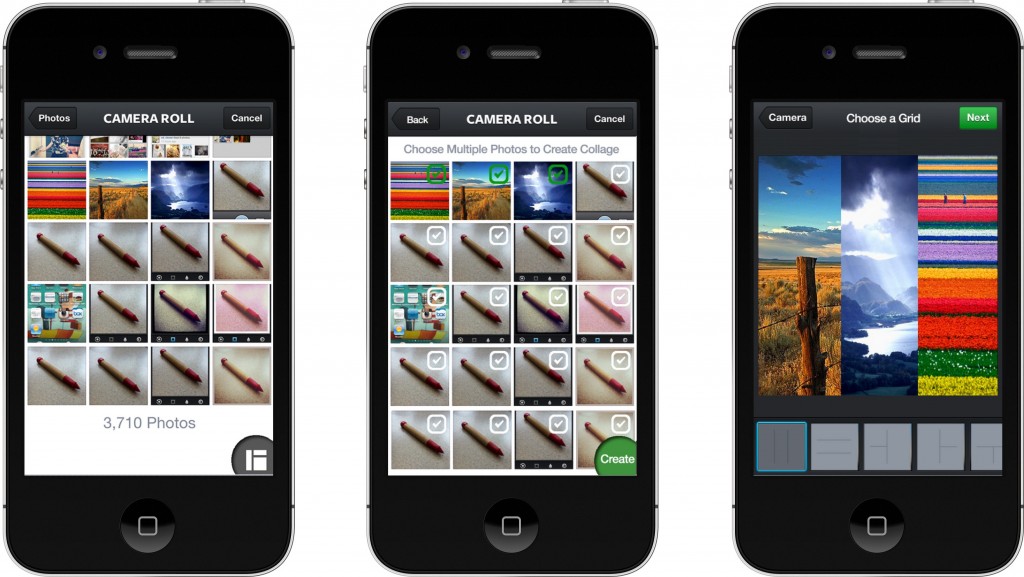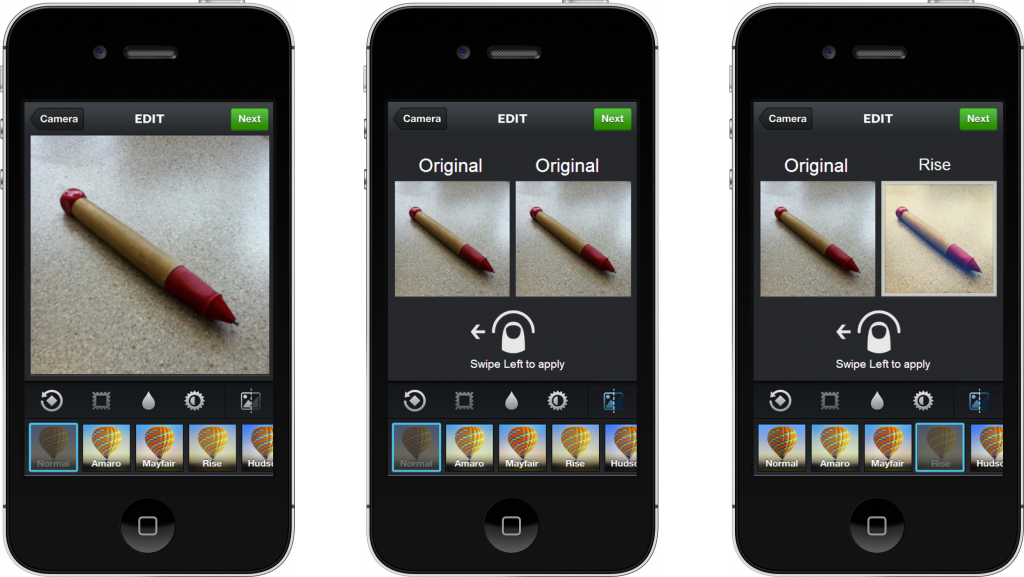THE INTRODUCTION
Instagram Is Great, But Still Plenty Of Room For Improvement
Instagram is an application designed to let users apply basic editing to their pictures directly from their smartphone. Many of the features, it offers could be done on a computer through the use of software such as Photoshop. However, this would require transferring the picture to the computer in order to do this. Not only that, but the preset filters and tools Instagram offers makes the process not only simple (you’re able to do it directly from the phone) but also quick (all you have to do is press a couple of buttons). Given these facts, it’s no wonder that Instagram would be incredibly popular among those that fancy themselves amateur photographers!
While Instagram performs its tasks quite well, it is not perfect. Our group aimed to explore how Instagram can be improved. We did this through the collection of user data through methods such as diary studies and interviews. We then used that data to inform our redesign of Instagram. Finally, we tested our redesign against users in an effort to see if we succeeded in our goal of improving the Instagram experience.
Specifically, we focused on the experience of Instagram from photo taking to uploading, we didn’t try to redesign the whole app. However, we also covered other aspects of Instagram in our follow-up interviews, such as its socialization feature.
THE PROCESS
To improve an existing experience, we need to know how the current experience is, and what are the values it delivers to users. Therefore we conducted background research on Instagram, to study it in detail.
What's Instagram?
Instagram is an online photo-sharing and social networking service that enables its users to take pictures, apply digital filters to them, and share them on a variety of social networking services, such as media sites including Facebook or Twitter. (Wikipedia)
Vision & Goals
Allow users to experience moments in their friends' lives through pictures as they happen. A world more connected through photos. (Instagram)
Popularity & Users
By May 2012, the total number of photographs uploaded had exceeded one billion. The service rapidly gained popularity, with over 100 million active users as of April 2012 and over 300 million as of December 2014.
Features
Users can upload photographs, connect their Instagram account to other social networking sites (which will enable the option to share uploaded photos to those sites), and follow other users' feeds.
To understand how users currently use Instagram, we conducted a diary study. We had 4 participants in our study. They were asked to do the following:
Per Pictures Survey
Participants were asked to fill in a survey each time they choose a photo. This aimed to find what, where and why users use Instagram in what situation.
Daily Survey
Participants were asked to fill in another form at the end of the day summarizing their experience of using Instagram. This provided a good point of reference when later follow-up interview was conducted.
Check- in Interview
Halfway through the process, data collected was reviewed, and interviews were conducted. This is to make sure that necessary data was collected and allow users to elaborate more about their experience.
Exit Interview
At the end of the diary study, another interview was conducted to collect all other information that was not collected in the diary. This is the time when more elaborate information was obtained.
Relevant work/activity models were developed after analyzing the fieldwork data. This assisted us both in understanding how Instagram works (the theory) and in how people actually use Instagram (the practice).
Affinity Diagram
Information from the diary study and interviews was compiled through an interpretation session to create list of notes of the insight uncover during the study. These categories and the corresponding voice of the user was used to refine both our scope and our vision.
Sequence Model
We created a sequence model to help better illustrate the process an Instagram user goes through when deciding to take a photo and in going through the process of uploading it.
UED
To better understand the current workflow of the Instagram application, we reverse engineered a UED model from the application. In particular, we looked at the pages and information flow that happens when taking/uploading a picture to Instagram.
THE DISCOVERY
Insights From Diary Study
Efficiency is the key
Users want to share pictures directly through a photo album to Instagram on iPhone.
Privacy is a concern
If they don't want to share a picture with the whole world, they won't upload to Instagram. Some people will only share Instagram among close friends.
Quality matters
People tend to use the camera function to take multiple photos then upload it to Instagram later. They choose pictures and filters carefully - only upload a photo if it meets their quality.
3rd-party applications
People use third-party applications to edit the pictures, add text, add frame, make a collage, upload a full image.
More photos I like
People want to find the style of photos they like, and sometimes they look into people they're following to find more interesting people.
Keep me informed
There is no notification when new followers follow them. They also want to have a way to expand the profile picture.
A memorial story
People take Instagram as a place to show friends what they did, and any great moments they had. Also as a journal where their memory is kept.
A place for inspiration
People use Instagram as a source for inspiration, where to go, what to do.
User Profile
Amy, a photographer
Users who care about their Instagram profile, and “high-quality” pictures.
- Amy has DSLR and uses it when doing professional work
- She has a crafted profile in Instagram
- She has a lot of followers
- She cares about whether the photos she uploaded are “high quality”
- She takes multiple pictures from different perspectives and carefully choose one of the best before upload it to Instagram
- She doesn’t quite use filters in order to convey the reality to audience
Pain Points:
- Don’t know when someone follows her
- Can’t expand the profile picture to see who the new follow is
- Can’t upload the photos from her iPhone’s photo gallery to Instagram
Jo, a general daily user
Users who don't mind their Instagram profile. They use Instagram only to take and share pictures.
- Jo loves taking photos in his daily life
- No particular theme that he actually focuses
- Doesn’t have many followers, and most of the followers are his friends
- Maybe following a decent amount of people that he likes
- Most of the time, he just opens Instagram, takes a photo, and chooses a filter that best fit the picture, and then uploads it
- Spends quite a few time choosing the “right” filter, applying and comparing them back and forth
Pain Points:
- Deciding which filters to apply is time-consuming sometimes
- No mechanism to find others who has a similar portfolios he likes
- Need to turn to 3rd-party applications to edit the photos
Requirements
Once we had our data models put in place, we set about to establish our requirements. This helped to guide us through the design process and gave us a clear direction of what we hoped to achieve with our redesign.
Our data indicates that for most purposes, our participants were quite satisfied with Instagram. Though we found there was room for improvement, we do not feel that it needs a complete rework, and we are not intended to make a whole new application to replace it. Instead, we decided to modify the Instagram application, and we will be focusing on refining the Instagram mobile application to provide a better user experience. With this in mind, any features we add or modify will not detract from the current positive experiences of using Instagram. Any modifications we make to Instagram should meet the following requirements:
Intuitive
Any features added should be intuitive enough that they can be easily learned, easily used, and easily memorized.
Efficient
Any features added should not obstruct the user’s task; Not significantly increase the steps needed.
Effective
Any features added should assist the user in creating or determining the “best” photo of a group.
THE VISION
Ideas For Making Improvements
Even though Instagram does well for most tasks. It achieves its purpose of providing users with an “Instant” application for quickly taking and sharing photos, as well as giving them a more professional look. However, it could be better. From the data we got from data collection, we have quite a few ideas for the improvement.
THE DESIGN
Sketches (Consolidated Feature Set)
Because of the limited amount time for doing this project, we decide not to cover all the improvement ideas in visioning. Here are the area that we are going to address: a.Allowing the user to use collage feature; b.Allowing the user to be able to compare different effects of the photo; c.Allowing the user to have the full ability of the Phone Camera; d.Allowing the user to be able to compare and select the picture that they think is the best; e.Reducing the time for opening Instagram, at least to the level that not obviously slower than opening phone camera.
Low/High Fidelity Prototype
Collage Feature
The collage feature provides the Instagram user the ability to create a photo collage. To keep with the baseline of not subtracting from the user experience by changing users’ established workflow, a button was added to a pre-existing screen, the photo gallery. Users are then prompted to choose multiple photos as well as one grid from finite numbers of predefined layouts.
Filter Comparison
Filter Comparison allows users to be able to see immediately the differences between filters. By providing a two picture view, the user can reference and compare to their selected filter. This assists them in deciding whether or not another filter could create a better image. Once the user finds a filter they like, they can apply it. After it has been applied, the user can continue trying other filters, comparing them to the new “original” until they are satisfied with the edited photo.
THE VALIDATION & REFINEMENT
Testing The Prototype
Collage Feature
Feedback: Overall, we received positive feedback from our participants. Most of them liked the idea and thought it would be quite useful. However, there are also some issues. For example, the icon for collage feature button is not intuitive and self-explanatory. Also, the way we put the button to the bottom right corner of the screen is quite different from the way that Instagram generally put buttons, which is a dis-match to users.
Suggestions: Instead of using the button at the bottom right corner, allow users to select one or more pictures, as long as more than one pictures are selected, they can start making collage in next screen, where they can choose different styles of collage, and rearrange, rotate, zoom in/out the photos.
Filter Comparison
Feedback: Overall, most users are highly satisfied with this new feature. Users Commented, “I Love it! Very Clever and advantages”, “You get what you see” and “I have been waiting for this for a long time. The users also rated the feature to be easy to use and easy to learn. However, the evaluation also uncovered an issue within the design of the feature. It was found that it was difficult to understand “swipe left to apply” instructions. It was not clear where to swipe.
Suggestions: A clearer instruction such as “swipe picture to the left to apply” or make the label area swipeable might improve this issue. It might also be advisable to change the finger icon into an illustration of moving the right picture to the right in order to apply the effect.
Conclusion and Future Work
The changes we made to Instagram seemed to have a good reception, at least conceptually. Going forward we would expand on them, refining the prototype concepts to give a fuller experience and run further feedback.
In addition to refining the concepts we came up with, it could also be good to broaden our scope. We chose a narrow scope to focus on with our redesign. However, much of our data could be applied to Instagram at large. Our diaries provided us not only with information on how people were using Instagram, but why. The why touches much more on the social aspect of the application, which we wrote out of our scope this time.



